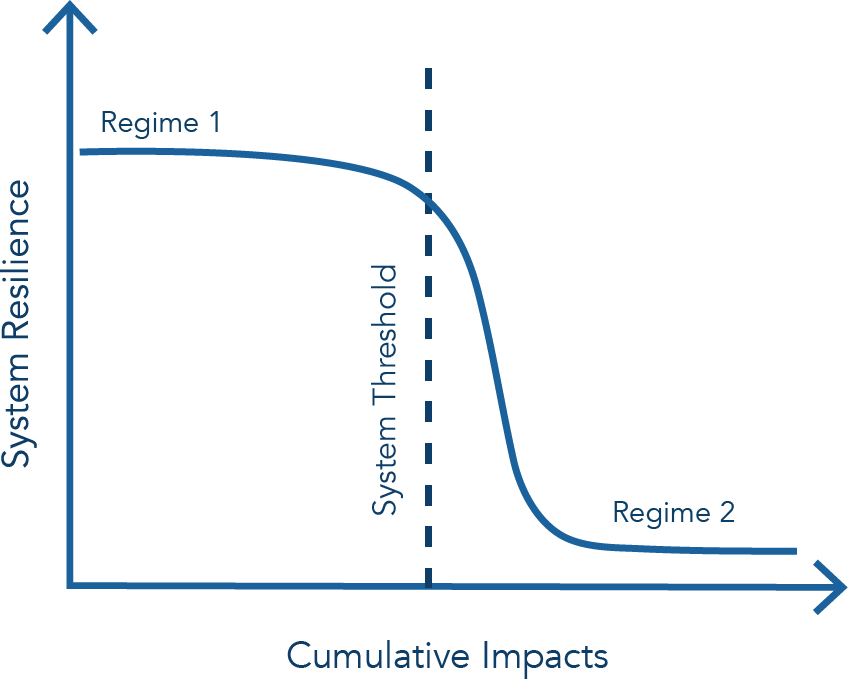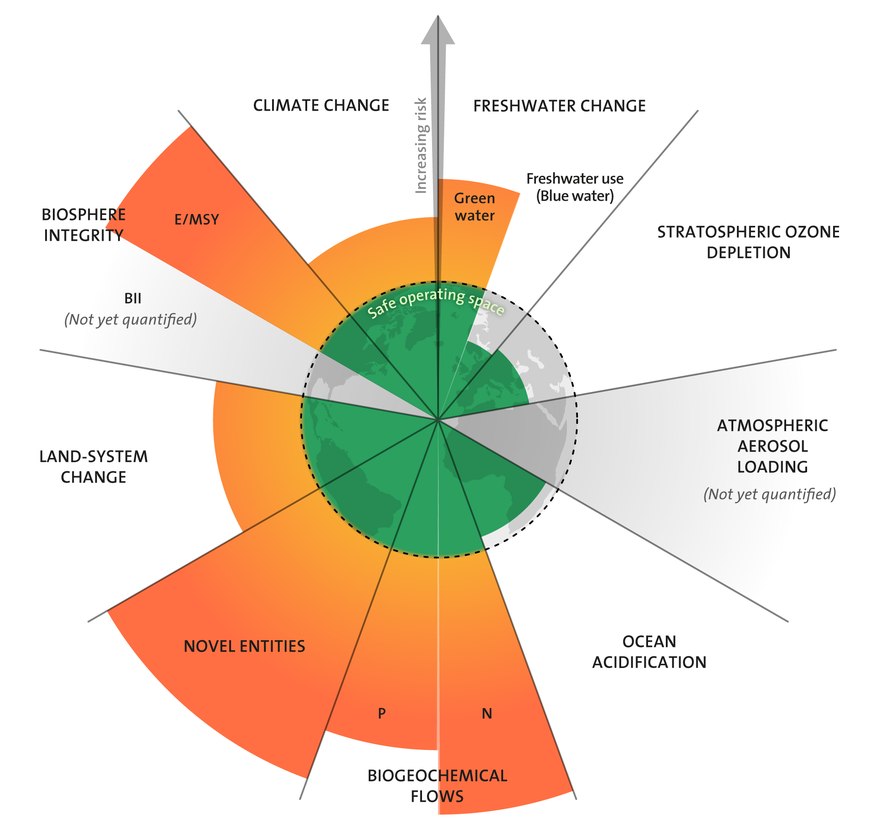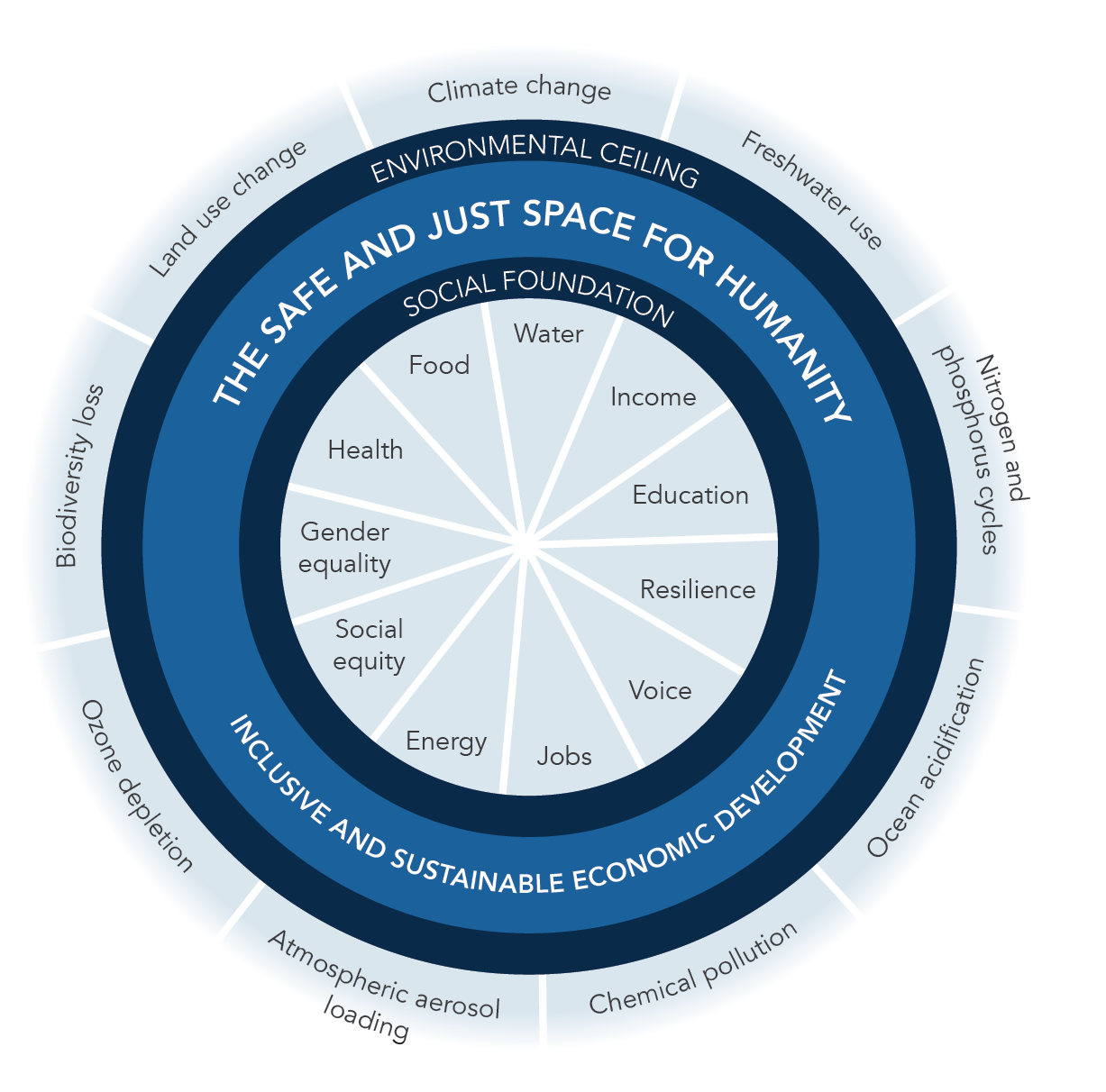
Image by Hao Zhang on Unsplash
In this blog, we tackle the idea of social and environmental thresholds and why companies need to consider them when developing their corporate strategy, setting credible sustainability goals, and taking meaningful action.
When many executives think about thresholds, especially those with an accounting background, they are often thinking about thresholds of financial materiality – the point at which a misstatement or a financial error would make a material difference on a user’s decisions.
But there’s another way in which executives need to think about thresholds. Understanding the limits of the planet’s ability to withstand environmental stress or a community’s ability to function in the face of stresses like income inequality or systemic discrimination are directly linked to your business success. Leading executives and directors are recognizing the need to broaden their understanding of systemic environmental, social, and governance issues and the constraints they place on their businesses.
We're reminded of a comment from the CEO of large logistics conglomerate that we interviewed a few years back. He said, “you don’t become a CEO without being a systems thinker – it’s a question of what you see as the boundaries of the system that you need to manage.” He went on to point out: “once you realise that the boundaries of your system include environmental and social boundaries, you can’t unsee it.”
In an article Duncan Austin wrote for Responsible Investor magazine, he described this as the difference between limits-denying and limits-accepting world views.

Image by Duncan Austin: https://www.responsible-investor.com/articles/from-win-win-to-net-zero-would-the-real-sustainability-please-stand-up
So, what exactly is a threshold?
A threshold is the point at which the resilience of an environmental, social, or economic system becomes compromised. This occurs when the total impacts imposed on the system exceed its capacity to assimilate those impacts.
Unlike accounting thresholds, systems thresholds are often marked by sudden and non-linear shifts in systems dynamics. Think of this as the ‘tipping point’ of a system: introduce further stress, and the system is fundamentally altered and experiences profound change that often results in irreversible consequences.

Crossing or breaching a threshold does not always bring about a sudden and dramatic change. Sometimes the shift is more gradual. In either case, tremendous effort is required to re-stabilize and return the system to its initial state, assuming it can even be done.
Understanding environmental and social thresholds
Once you start looking for these environmental and social boundaries and constraints, you will start to see them everywhere. That said, it can be challenging to precisely define key environmental and social thresholds because non-linear underlying systems dynamics may be difficult to model and predict.
Often thresholds are only truly identified once they have been surpassed. One can speculate about the conditions that might spur an economic recession, but we can only truly identify a recession after experiencing economic decline over two successive quarters. The same goes for social and ecological thresholds. For this reason, it is common to use scenarios as a means of modeling systems, identifying the potential for regime shifts, and the thresholds at which they are most likely to occur.
Those companies that have heeded the call of the Taskforce for Climate Related Financial Disclosure (TCFD) to engage in a scenario analysis process have become more aware of the threshold related to climate change and the increased physical risks we face, like extreme weather, drought, sea-level risk, forest fires, and extreme heat as we cross it.
The latest report of the Intergovernmental Panel on Climate Change (IPCC) released in August 2021 reinforces that we now stand at the threshold between how we have long assumed our environmental and social systems function and a new regime where the old rules just don’t apply.
The amazon rainforest, one of the Earth’s largest natural carbon sinks is now emitting more carbon than it absorbs. The ocean currents in the Atlantic Ocean are slowing and at risk of shutting down, with devastating consequences for global food production and compounding issues of extreme weather and the melting of sea ice.
Low-income earners, women, historically and systemically disadvantaged persons, and younger generations are particularly at risk from the impacts of these changes, placing further strain on our social systems.
Ready to learn more about social and environmental thresholds?
There are some easy places to start. The Planetary Boundaries framework, based on the work of the Stockholm Resilience Centre, has popularized the concept of systems thresholds, and depicts a set of upper limits for nine human–environmental coupled systems beyond which we see functional collapses of key systems. Already, at least three of these environmental thresholds have been surpassed: climate change; nitrogen and phosphorous loading; and biodiversity loss. David Attenborough helped produce a very approachable documentary for Netflix that explains the concept of planetary boundaries.

Updated Planetary Boundaries. Figure designed by Azote for Stockholm Resilience Centre, based on analysis in Wang-Erlandsson et al., 2022, Persson et al 2022 and Steffen et al 2015
Kate Raworth’s Doughnut of Planetary Boundaries and Social Foundations builds on the planetary boundaries framework, combining these environmental upper thresholds with a set of lower thresholds (called social foundations), beneath which the resiliency of social and economic systems is threatened. These social foundations include issues such as access to energy, decent work, and appropriate nutrition. The idea is that operating within these upper and lower thresholds helps to maintain the resiliency of the systems we live in by avoiding compromising them. Or, better yet, contributing to systems resilience by contributing to system regeneration and repair.

Doughnut of Planetary Boundaries and Social Foundations. Adapted from https://www.kateraworth.com/doughnut
Our embedded strategies guide also provides a concise background on thresholds and limits and helps companies understand how to factor these limits into their core strategy process.
You can also read more about the concept of sustainability thresholds here and follow the work of the global thresholds and allocations council here.
How can companies do their part?
First, understand that it is about doing your part. Incremental reductions aren’t enough. You need to understand what it will mean to do your part to ensure the continued resilience of these key systems.
Second, you need to know that our understanding of key social and environmental thresholds continues to evolve. Decades ago, the IPCC proposed a threshold of a 2°C average global rise in temperature relative to pre-industrial levels as the point beyond which it would be impossible to avert the worst consequences of climate change. In 2018, based on new research and data, the IPCC adjusted this threshold to 1.5°C. Now in 2021, it is clear that even if we reach net-zero by 2050 and global average temperature rise can be kept to 1.5°C of warming, we will still be at risk of climate-related death, poverty, water and food shortages, and displacement from rising sea levels because we have crossed over into irreversible changes in our climate system.
That’s why companies need to do their part to take our economy into a rapid transition. Net-zero by 2050 is now the “minimum” target to strive for to deliver a 1.5°C world and companies need to be focused on helping to halve global emissions this decade.
Beyond climate change, companies need to consider key thresholds with respect to water, biodiversity, land use, and other environmental issues. Leading companies are working on these issues at the local scale – they are considering their water use in the context of the watersheds in which they operate; committing to regenerative, nature-based solutions to support ecosystem health; and exploring circular approaches to resource use, product design, and material stewardship.
The Science-Based Targets Network has recently released initial guidance to help companies incorporate action on nature into the way they do business.
For social issues, leading companies are considering social thresholds. To support the resilience of the communities in which they operate, companies are committing to pay a living wage, ensuring their workforce – and particularly their senior management teams – are reflective of the societies in which they operate, and contributing to local economic and community resilience.
Our collective understanding of systems resilience and systems thresholds is evolving, and quickly. The surest way to keep pace is to ground your learning and efforts in the particular ecosystems and social systems in which you operate. Building this understanding needs to be an inclusive and iterative process. Your understanding can – and should – evolve as new knowledge becomes available and as your operating context changes, including the expectations, risk tolerances, values, and priorities of the communities where you operate and on which you depend.
Go ahead, step over the threshold.